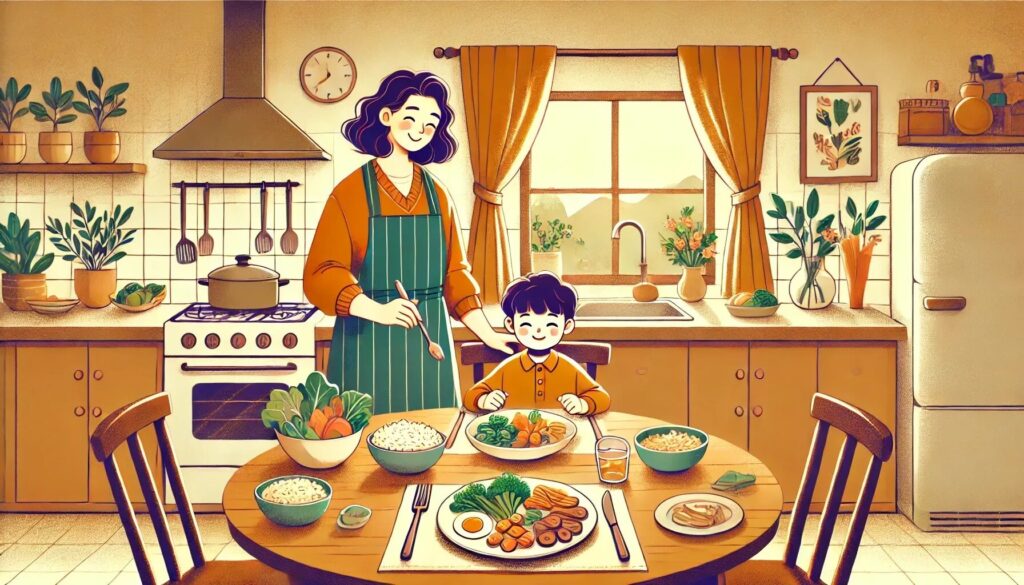1. Introduction
“I hate the smell of green onions!” “The texture of tomatoes feels gross…” Children often dislike certain ingredients. Children are more sensitive to smells and textures than adults, so it’s natural for them to avoid foods they dislike. However, with some cooking techniques, children can find these foods easier to eat. In this article, we’ll introduce cooking tips to help children who are sensitive to smells and textures.

2. Practical Points and Examples
- “Understanding Why Children Dislike Certain Smells and Textures”
There are several reasons why children might dislike certain foods:
- Strong smells → Green onions, bell peppers, garlic, fishy odors
- Difficult textures → Mushy texture of tomatoes, slimy texture of mushrooms, softness of eggplant
- Limited experience → New foods can feel unfamiliar
Tip: Foods become more appealing when you reduce strong smells and modify textures!
- “Cooking Tips for Children Sensitive to Smells”
Foods with strong aromas can often be made milder through different cooking methods.
- Green onions & onions → Become sweet when cooked! Add to soups and stir-fries
- Bell peppers → Easier to eat when finely chopped and mixed with ground meat
- Fishy smell → Using lemon or ginger creates a milder flavor!
Tip: Try “cooking methods that reduce strong smells” to make foods more appealing!
- “Cooking Tips for Children Sensitive to Textures”
Foods with challenging textures become more palatable when you change their form or combine them with other ingredients.
- Don’t like tomatoes → Heat and turn into sauce (add to curry or meat sauce)
- Don’t like soft eggplant → Pan-fry until crispy
- Don’t like slimy mushrooms → Mince and mix into hamburgers or fried rice
Tip: Foods become more appealing with “texture modifications”!
- “Make Foods More Appealing by Mixing with Favorite Dishes”
Instead of serving challenging ingredients on their own, they’re often more accepted when mixed into favorite dishes.
- For vegetable-averse children…
- Mince and mix into curry or hamburgers
- Chop and add to rolled omelets or savory pancakes
- For fish-averse children…
- Make white fish into fried fish (coating masks the smell)
- Combine salmon with cream sauce for a milder taste
- For texture-sensitive children…
- Puree ingredients into cream soup
- Grate vegetables and mix into hamburger patties
Tip: Children naturally learn to eat foods when they’re “transformed into easier-to-eat forms”!
3. Important Points and Tips
- “Don’t Force Children to Eat”
Forcing children to eat can make them dislike foods even more.
- “If at First You Don’t Succeed, Try Again Later”
Taste preferences can change after a few months, so take a long-term approach with an “it’s okay not to eat it now!” mindset.
- “Try Again with Different Forms and Cooking Methods”
For example, even if children dislike bell peppers, they might eat them when “finely chopped and mixed” or “cooked until sweet”.
4. Summary and Next Steps
Even children who are sensitive to smells and textures can learn to eat more foods with the right cooking techniques! Start with:
- For strong smells, cook thoroughly or minimize flavors
- For challenging textures, modify the form or mix with favorite foods
- “Try different preparation methods” and help children gradually get used to new foods! When children can eat without stress, mealtimes become more enjoyable!




